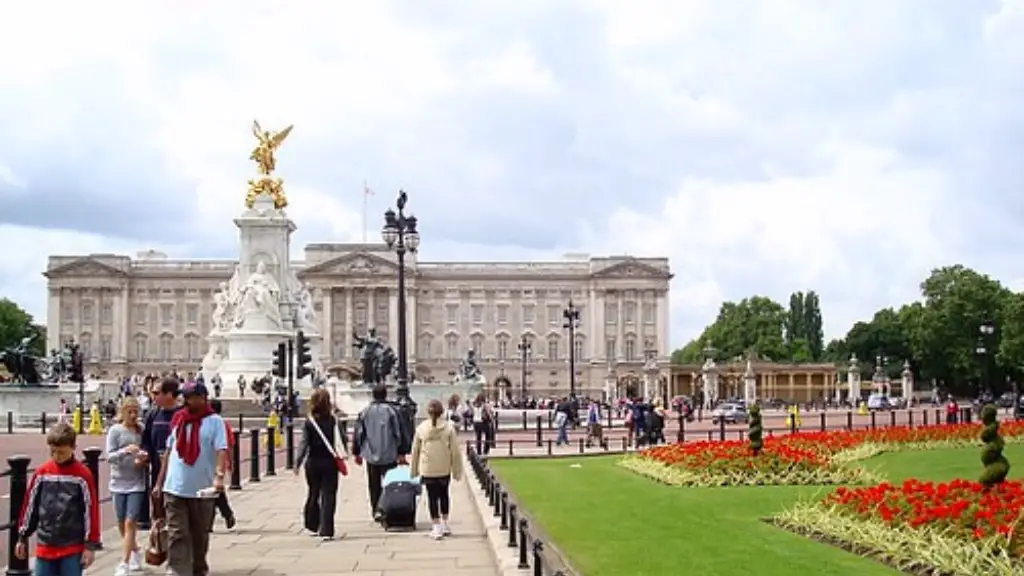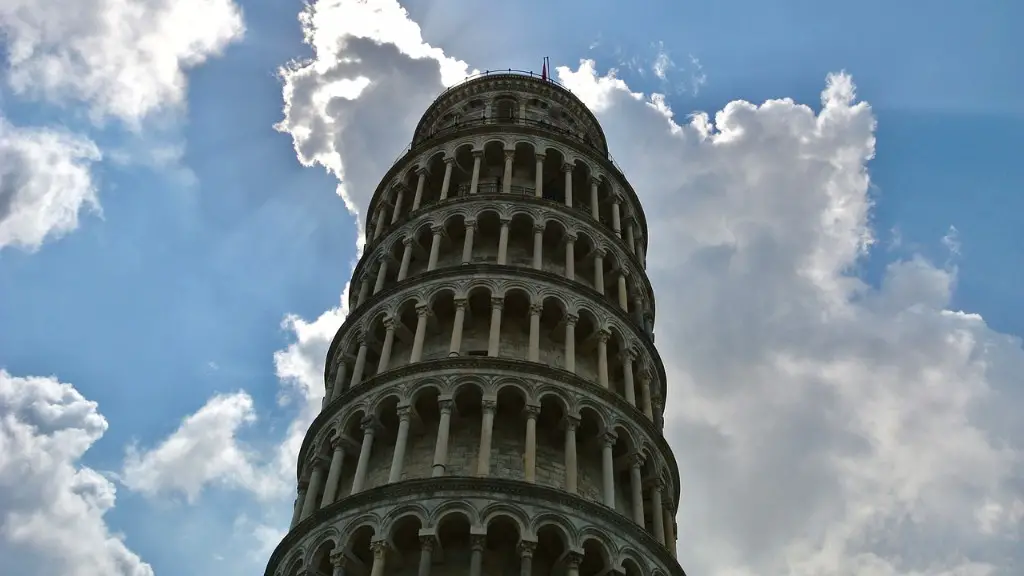The Sagrada Família is the iconic cathedral based in Barcelona that was first planned by Spanish architect Antoni Gaudí in 1883. This remarkable structure has been in a near-constant state of construction for about 130 years. Many individuals may be wondering if the Sagrada Família is ever going to be finished. This article will delve into the mystery of the Sagrada Família and provide an answer to this question.
To truly understand the mysteriousness of the Sagrada Família, its history must be considered. Gaudí inspired a near-century-long construction project built in the style of Catalan modernism. He worked on the cathedral for over 40 years until his death in 1926 and while his work may never be finished in its entirety, his legend lives on. Gaudí was the most influential architect of his day and developed close links with Barcelona, which gave the city a great source of pride.
After Gaudí’s passing, work on the Sagrada Família slowed until 1979 when a new project was launched, offering hope for its completion. However, delays have pushed back completion dates for years. A 2012 estimate confirmed that completion would be around 2026, and a later prediction was made for 2040. However, in 2019, the expected completion date was moved to somewhere between 2026 and 2032. While this may seem far away, the Sagrada Família has and continues to make steady progress.
In terms of what still needs to be done, the “big pieces” of the puzzle are more than halfway finished. The internal structure is already in place and much of the construction is now focused on the exterior. The largest and most complicated project left to complete is the completion of the Sagrada Família’s famous spires, in both their physical and ornamental form. This includes the spires, masonry, sculptures and towers, plus the construction and ornamentation of the various façades. All of these components will create the signature look of the Sagrada Família once they are finished.
Some experts believe that the construction project may be nearing its end. In the last few years, the construction process has accelerated, with new breakthroughs being made every day and the project becoming more efficient with the help of modern technology. The team behind the construction of the Sagrada Família is confident that the resting of the spire will be finished in the next couple of years and that the rest of the building should be completed within the next 10 years. Adding to this optimism of completion, Barcelona politicians are reportedly committing €50 million more to the construction.
The ambition and dedication of the various individuals who have been involved in the Sagrada Família’s construction is unparalleled. The project has spanned the lifetimes of four generations and it continues to be made possible through the unwavering commitment of the hardworking team dedicated to ensuring the success of this magnanimous architectural feat. Despite all the various setbacks throughout its construction, the Sagrada Família still stands strong.
Negotiation Efforts
Recently, the Sagrada Família team has been in talks regarding how to negotiate the funds needed to finish the project by 2032. A group of city council members, architects, construction managers, and other stakeholders have all come together in effort to develop a workable solution. The Spanish National Heritage (Patrimonio Nacional) has also become involved by increasing their contribution to the effort.
In particular, construction managers are striving to reduce the amount of waste produced by the project. The team is exploring ways to optimise the use of resources enabled through advancements in engineering and design so that no money is wasted and the project is properly managed.
Additionally, the team is actively conversing with suppliers to obtain the material and machinery needed for the project. The negotiators are working hard to get the suppliers onboard with these plans and to ensure that their materials are of the highest quality and will be delivered in a timely manner.
Furthermore, the architects participating in these negotiation efforts have done an unquestionable job of keeping the designs of the original project intact. Each new addition must follow a meticulous plan managed by the team to ensure that the structure will remain faithful to the original designs.
Preservation of the Architecture
For those unfamiliar, the Sagrada Família is what’s known as a Unesco world heritage site and is an excellent example of modernism. Therefore, the team behind the construction of the Sagrada Família ensure they use materials that are consistent with the original design.
A large part of this preservation is the focus on keeping the structure as true to the original design as possible. This involves utilizing the construction techniques and materials used by Gaudí and the original architects. This includes kiln-fired ceramic tiles, colored stones, blue and yellow glass windows, ironworks, and other characteristics of Catalan modernism.
The team also takes special care in preserving their work with state-of-the-art architecture design software which helps them keep track of the structure, sizes, and position of every part of the Sagrada Família. With the help of this software, the team can maintain a record of the construction as it stands currently and can update it in real time as the project progresses.
Lastly, the Sagrada Família is actively trying to raise more financial support in order to reach their ambitious completion timeline. Although individual donations and initiatives have helped them reach this goal, the the team has launched campaigns to commercialize the building and reach a wider audience. For example, many of the areas inside the Sagrada Família have been opened to the public, in addition to opening a bookstore and cafe that offer souvenir items and snacks.
Environmental Factors
Apart from the durability and preservation of the Sagrada Família, the team has also taken special measures to reduce the environmental impact of the project. The Sagrada Família is built from materials that are not only sustainable but also have a low carbon footprint. The construction materials used have all been locally sourced and produced in order to maintain a low impact on the environment.
The construction project also utilizes a plastic waste collection system and places a great emphasis on recycling all waste materials produced. The group ensures that none of the repurposed material ends up in landfills and instead is reused and incorporated into the building.
The team is also using local wastewater systems and is actively researching ways to reduce the impact of the waste produced by the Sagrada Família. The team’s ongoing efforts to reduce energy consumption and create a renewable energy system will also help to drastically reduce the amount of greenhouse gas emissions.
Archival Efforts
The Sagrada Família team is also working hard to archive the building’s history, complete with the first architectural sketches drawn by Gaudí. The team is actively collecting and preserving documents and images from the various years of architectural work and displaying them in the Sagrada Família’s own museum.
Additionally, the team has recently developed a virtual tour of the current building in order to enable individuals and groups to experience the construction with augmented reality. With the help of digital imaging and 3D models, users can explore the Sagrada Família in an entirely new way before the project is finished.
The virtual tour helps to generate attention and build awareness around the project which in turn results in donations coming in from around the world. With the help of these donations, the team can continue to research and develop new technologies to help with the completion of the project.
Consequences of Construction
The impact of the Sagrada Família’s construction has been huge and has changed the social and economic atmosphere of Barcelona in a big way. Hotels and restaurants have benefited from the tourist influx the city experiences due to the Sagrada Família and this has helped to bring in much needed revenue for the local economy.
Apart from the economic impact, the construction of the Sagrada Família has also created awareness of the importance of preserving international culture and heritage. The resources and effort put into the effort of preserving the structure act as an example of how invaluable architectural projects can be.
The construction of the Sagrada Família has also provided employment opportunities in the city and has helped development of the labour market in the Barcelona region. The efforts of the workers and the overall project have had a positive impact on the city.
Current Status
The current status of the Sagrada Família’s construction is a complex and complex topic. Despite the fact that the structure has been in an almost non-stop state of construction for over 130 years, the team behind it have managed to keep their enthusiasm alive, driven by the ongoing promise of completion.
The team has confirmed that a completion date of 2026 is near, with a optimistic estimate of 2032 being proposed. With the determination and dedication of the hardworking individuals, the Sagrada Família will remain an icon of architectural triumph and an invaluable symbol of Catalan modernism.


